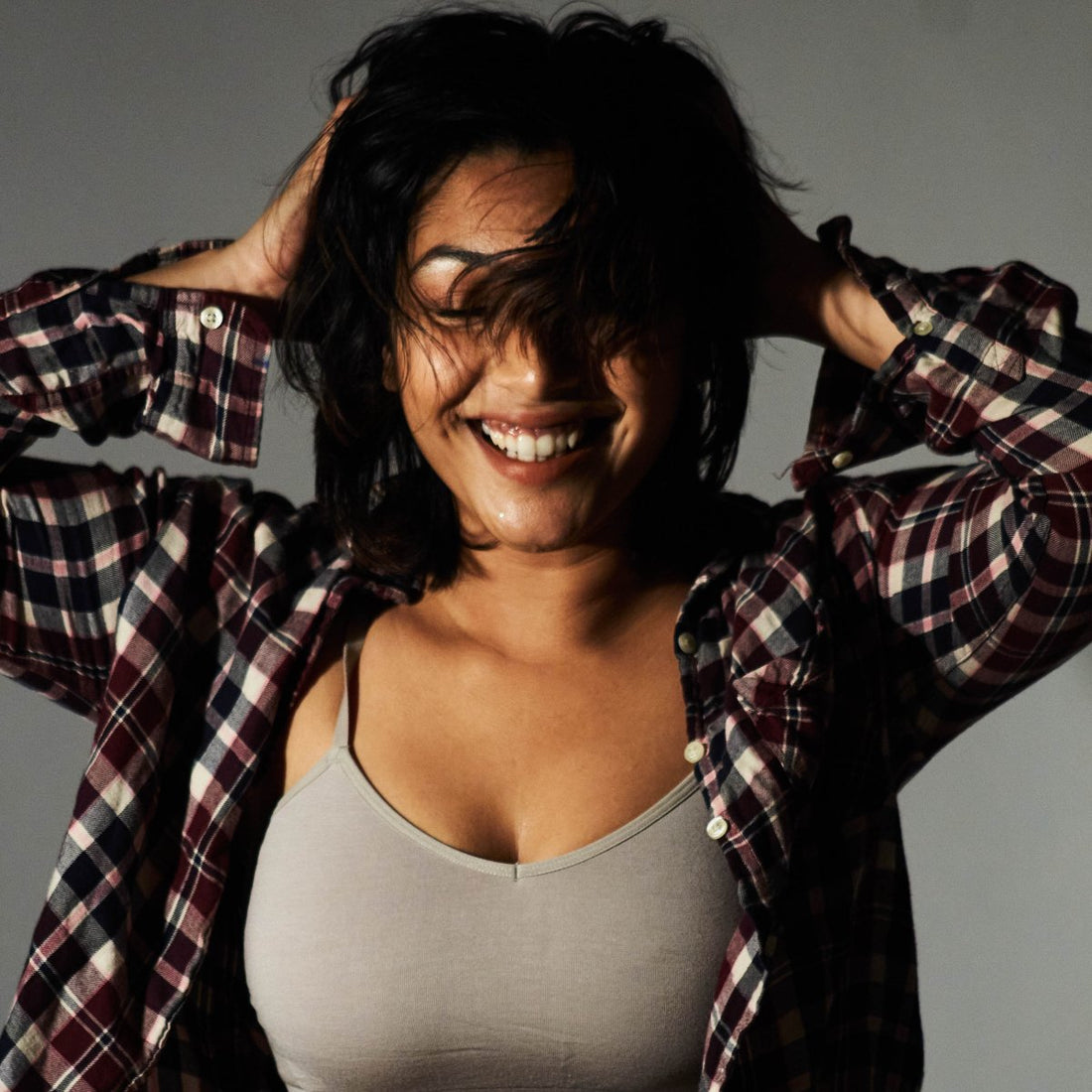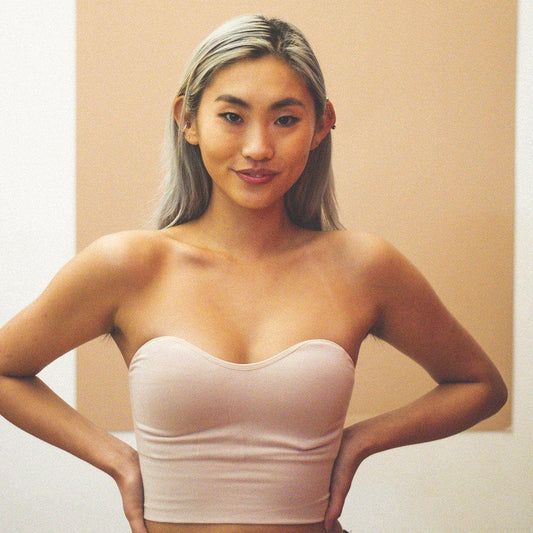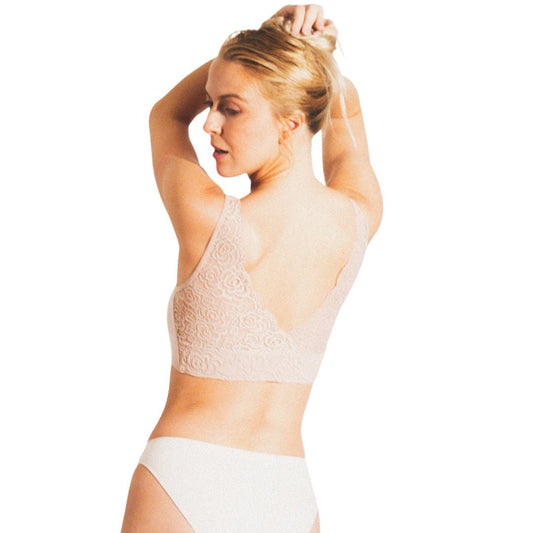
Signs Your Bra is Too Small: How to Ensure a Perfect Fit and Comfort
Are you tired of uncomfortable bras that leave you constantly adjusting and readjusting throughout the day? It's time to say goodbye to ill-fitting lingerie and embrace the comfort and confidence that comes with a perfectly fitting bra. In this article, we will explore the telltale signs that your bra is too small and provide you with expert tips on how to ensure a perfect fit. From digging straps to spillage and discomfort, we'll cover it all. Say goodbye to the days of discomfort and hello to a bra that supports you in all the right ways. So, grab a cup of tea, sit back, and get ready to learn how to find the bra of your dreams. Let's dive in and discover the secrets to ultimate comfort and style and sizes of bra.
Having a well-fitting bra is not just about comfort; it's also about your overall health and confidence. A properly fitting bra provides the necessary support to your breasts, preventing sagging and minimizing the risk of back and shoulder pain. Furthermore, a bra that fits correctly enhances your natural shape, making you look and feel more confident in any outfit. Whether you have a smaller or larger bust, finding the right bra size is crucial for your well-being and appearance.
When your bra is too small, it can lead to a range of issues that affect both your physical comfort and mental well-being. Let's explore the common signs that indicate your bra is too small and needs to be replaced.
1. Digging straps: If your bra straps are leaving deep marks on your shoulders or constantly slipping off, it's a clear sign that your bra is too small. The straps should provide support without digging into your skin or causing discomfort.
2. Cup spillage: When your breasts spill out of the cups, creating a "double boob" effect, it's a surefire sign that your bra is too small. The cups should fully enclose your breasts without causing any bulges or spillage.
3. Underwire discomfort: If the underwire of your bra is digging into your skin or poking your sides, it's a strong indication that your bra is too small. The underwire should rest comfortably against your ribcage, providing support without causing any pain.
4. Back bulges: When your bra is too small, it can create unsightly bulges and rolls of skin around your back and underarms. A well-fitting bra should provide a smooth and seamless appearance, without any visible bulges.
5. Restricted movement: If your bra feels too tight and restricts your movement, it's a clear sign that it's too small. A properly fitting bra should allow you to move freely and comfortably without any restrictions.
Now that you are familiar with the common signs of an ill-fitting bra, let's move on to the next section and learn how to measure your bra size correctly.
Measuring your bra size correctly is the first step towards finding the perfect fit. Here's a step-by-step guide to help you measure your bra size accurately:
1. Band measurement: Start by measuring the circumference around your ribcage, just under your bust. Make sure the measuring tape is snug, but not too tight. Round the measurement to the nearest whole number. This number will determine your band size.
2. Cup measurement: Measure the fullest part of your bust, making sure the measuring tape is parallel to the ground. Again, round the measurement to the nearest whole number. Subtract the band measurement from this number to determine your cup size.
3. Calculating your bra size: Use the band measurement to determine your band size (e.g., 34, 36, 38). Combine the band size with the cup size to find your perfect fit (e.g., 34B, 36C, 38D).
Remember that measuring is just the starting point, and different brands and styles may fit differently. It's essential to try on bras in different sizes and styles to find the one that suits you best. Let's move on to the next section and explore some tips for finding the right bra size.
Finding the right bra size can be a trial-and-error process, but these tips will help you narrow down your options and find the perfect fit:
1. Get professionally fitted: If you're unsure about your bra size or have never been fitted before, it's worth visiting a lingerie store for a professional fitting. An expert can measure you accurately and provide personalized recommendations based on your body shape and preferences.
2. Try on different sizes and styles: Don't be afraid to experiment with different bra sizes and styles. What works for one person may not work for another, so it's essential to try on a variety of options to find the one that feels and looks the best on you.
3. Pay attention to the fit: When trying on bras, pay attention to how they fit. The band should be snug but not too tight, and the cups should fully enclose your breasts without any spillage. Adjust the straps for a comfortable fit, and make sure the underwire sits flat against your ribcage.
4. Consider your wardrobe: Think about the types of outfits you wear regularly and choose bras that complement your wardrobe. Different styles, such as plunge, balconette, or sports bras, offer varying levels of support and coverage, so it's essential to have a variety of options to suit different occasions.
By following these tips, you'll be well on your way to finding the perfect bra size and style that fits you like a glove. Next, let's delve into the different types of bra styles and their impact on fit.
When it comes to bras, there is no one-size-fits-all solution. Different styles offer varying levels of support, coverage, and shaping. Here are some common bra styles and their impact on fit:
1. T-shirt bra: T-shirt bras are seamless and offer a smooth appearance under fitted tops. They typically have molded cups that provide a rounded shape and moderate coverage. T-shirt bras are great for everyday wear and work well with most outfits.
2. Balconette bra: Balconette bras have a low-cut neckline and wide-set straps, making them ideal for low-cut tops and dresses. They provide a lift and enhance cleavage, making them a popular choice for special occasions or when you want to feel a little more glamorous.
3. Sports bra: Sports bras are designed to provide maximum support during physical activities. They typically have a racerback or cross-back design and offer excellent coverage and control. Sports bras are a must-have for any active woman and should fit snugly to minimize movement and discomfort.
4. Push-up bra: Push-up bras are designed to enhance your cleavage by pushing your breasts upward and closer together. They typically have padding or gel inserts in the cups. Push-up bras are a great choice when you want to create a more voluptuous look.
5. Minimizer bra: Minimizer bras are perfect for those with larger busts who want to reduce the appearance of their breast size. They redistribute breast tissue to create a more streamlined silhouette without compromising on comfort.
Remember that the style of the bra can impact the fit, so it's essential to consider your preferences and wardrobe when choosing the right style for you. In the next section, we'll discuss how to adjust and troubleshoot your bra for optimal comfort.
Even with the right size and style, you may need to make some adjustments to ensure maximum comfort. Here are some tips for adjusting and troubleshooting your bra:
1. Strap adjustment: If your straps are digging into your shoulders or slipping off, try adjusting them. They should provide support without causing discomfort or leaving marks on your skin. If necessary, tighten or loosen the straps until you find a comfortable fit.
2. Band adjustment: The band should provide the majority of the support, so it's crucial to ensure it fits correctly. If the band feels too tight, try loosening the hooks or opting for a band size up. If the band feels too loose, tighten the hooks or choose a smaller band size.
3. Underwire positioning: The underwire should rest comfortably against your ribcage without digging into your skin or poking your sides. If you experience discomfort, adjust the position of the underwire by gently lifting it away from your body and repositioning it.
4. Cup adjustment: If you notice any spillage or gaps in the cups, try adjusting the straps or the position of your breasts within the cups. Make sure your breasts are fully enclosed without any bulges or spillage.
Remember that different bra styles may require different adjustments, so it's essential to experiment and find what works best for you. In the next section, we'll discuss the importance of regular bra fittings.
Your body changes over time, which means your bra size may change too. Hormonal fluctuations, weight gain or loss, pregnancy, and aging can all affect your bust size and shape. That's why it's crucial to have regular bra fittings to ensure you're always wearing the correct size.
It's recommended to have a professional bra fitting at least once a year. A bra fitting expert can measure you accurately and recommend the best size and style for your current needs. Regular fittings will ensure you're always wearing bras that provide optimal support and comfort.
In addition to professional fittings, it's also essential to pay attention to the signs that indicate your bra may no longer fit correctly. If you notice any of the signs mentioned earlier, it's time to reassess your bra size and make any necessary adjustments.
We've covered the basics of finding the right bra size and style, but what do the experts have to say? Here are some expert tips on finding the perfect bra fit:
1. Don't be afraid to try different sizes: Bra sizes can vary across brands and styles, so don't be afraid to try different sizes until you find the perfect fit. Remember that the number and letter are just a starting point, and you may need to adjust accordingly.
2. Pay attention to how it feels: The fit of a bra is just as important as the size. Pay attention to how the bra feels on your body and make sure it provides support and comfort throughout the day. If it feels uncomfortable or restrictive, it's not the right fit for you.
3. Invest in quality bras: Quality bras are worth the investment. They are designed with superior materials and construction, ensuring long-lasting comfort and support. While they may cost more upfront, they will save you money in the long run by lasting longer and providing a better fit.
4. Take care of your bras: Proper care and maintenance can extend the lifespan of your bras and maintain their fit and shape. Follow the care instructions provided by the manufacturer, and avoid machine washing or drying if possible. Handwashing and air drying will help your bras retain their elasticity and shape.
By following these expert tips, you'll be well on your way to finding the perfect bra fit that combines comfort, support, and style.
To ensure your bras maintain their fit and comfort, it's essential to take proper care of them. Here are some bra care tips:
1. Handwash your bras: Handwashing is the gentlest way to clean your bras. Fill a basin with lukewarm water and mild detergent, then gently agitate the bras in the water. Rinse thoroughly and squeeze out excess water without wringing or twisting. Lay them flat to dry or hang them by the center gore.
2. Avoid machine washing and drying: Machine washing and drying can damage the elastic and shape of your bras. If you must machine wash, use a lingerie bag and select the delicate cycle with cold water. Avoid using fabric softeners or bleach.
3. Rotate your bras: Wearing the same bra every day can cause it to stretch out faster. Rotate your bras regularly to give them time to regain their shape and elasticity. Aim to have at least three bras in your rotation for optimal care.
4. Store your bras properly: Proper storage can help maintain the shape and extend the lifespan of your bras. Stack your bras with the cups facing up or hang them on a bra hanger to prevent them from getting crushed or misshapen.
By following these simple care tips, you can keep your bras in top condition and preserve their fit and comfort for longer.
Finding the perfect bra fit is a game-changer. It not only enhances your comfort and confidence but also promotes your overall health and well-being. By paying attention to the signs that indicate your bra is too small and following the expert tips we've discussed, you'll be well on your way to finding bras that fit you like a dream.
Remember to measure your bra size correctly, try on different sizes and styles, and make necessary adjustments for optimal comfort. Regular bra fittings and proper care will ensure you're always wearing bras that provide the support and comfort you deserve.
So, say goodbye to uncomfortable bras and hello to a world of perfect fit and comfort. Embrace the power of a well-fitting bra and let it elevate your style and confidence to new heights. You deserve it!




